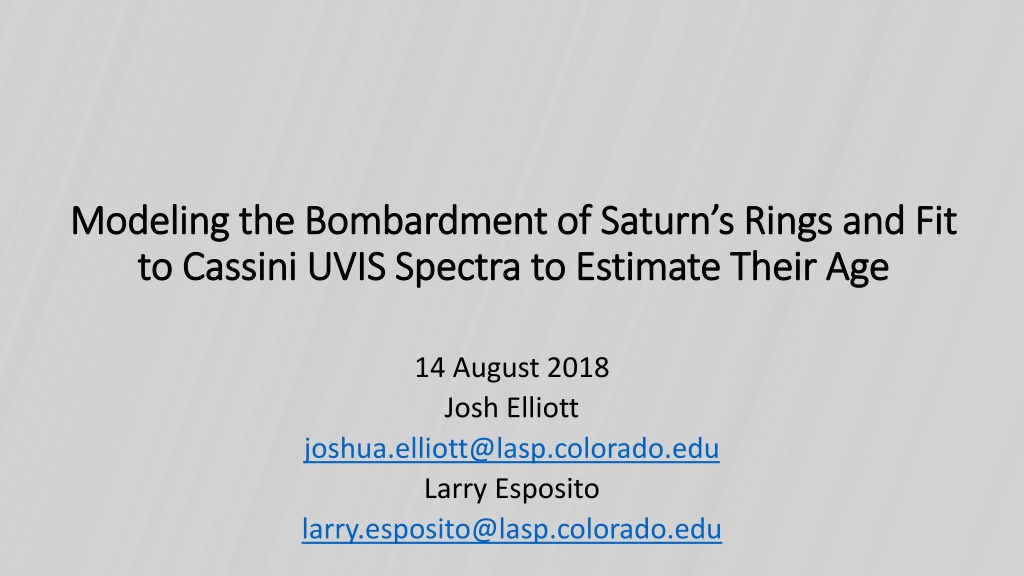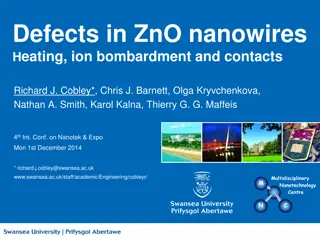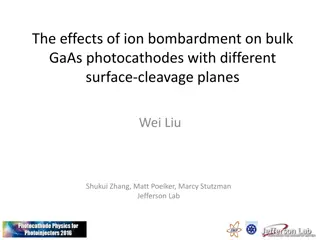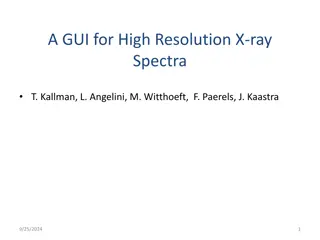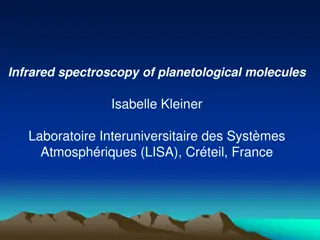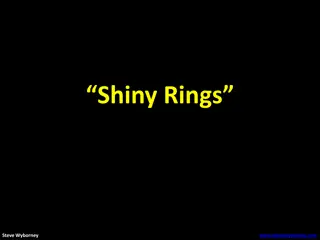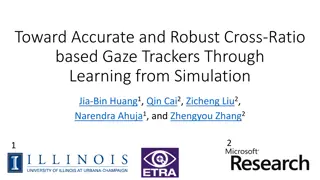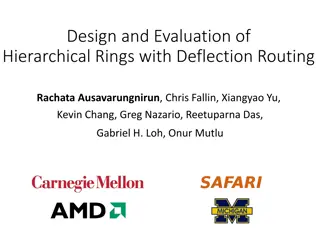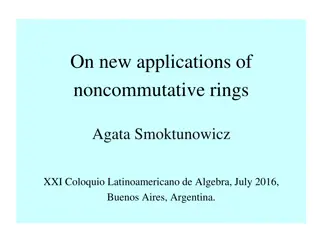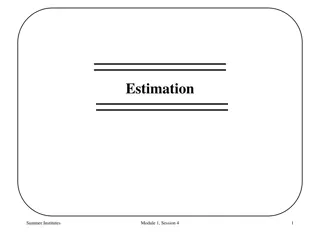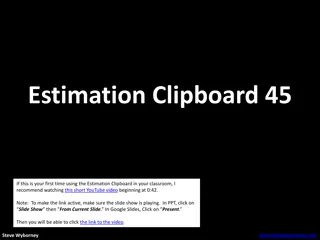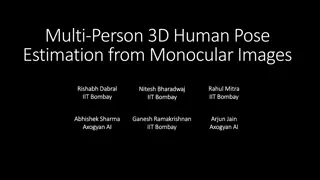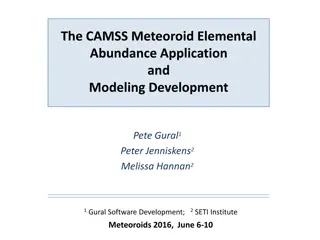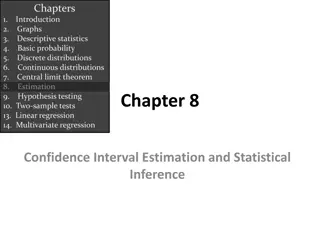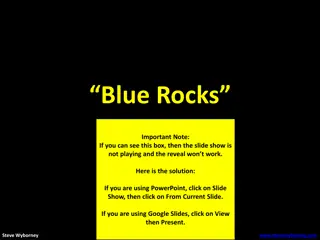Modeling the Bombardment of Saturn's Rings and Age Estimation Using Cassini UVIS Spectra
Explore the modeling of Saturn's rings bombardment and aging estimation by fitting to Cassini UVIS spectra. Goals include analyzing ring pollution using a Markov-chain process, applying optical depth correction, using meteoritic mass flux values, and comparing Markov model pollution with UVIS fit to estimate ring ages based on A, B, and C characteristics. Various models and data are utilized for a comprehensive analysis.
Download Presentation

Please find below an Image/Link to download the presentation.
The content on the website is provided AS IS for your information and personal use only. It may not be sold, licensed, or shared on other websites without obtaining consent from the author. Download presentation by click this link. If you encounter any issues during the download, it is possible that the publisher has removed the file from their server.
E N D
Presentation Transcript
Modeling the Bombardment of Saturns Rings and Fit Modeling the Bombardment of Saturn s Rings and Fit to Cassini UVIS Spectra to Estimate Their Age to Cassini UVIS Spectra to Estimate Their Age 14 August 2018 Josh Elliott joshua.elliott@lasp.colorado.edu Larry Esposito larry.esposito@lasp.colorado.edu
Goals Model ring pollution, using Markov-chain process. Apply filling-factor (optical depth) correction. Use meteoritic mass flux values presented by Kempf et.al 2017 (AGU). Fit UVIS ring spectra, determine observed fractional pollution. Compare Markov model ring pollution with UVIS fit. Estimate A, B and C ring ages.
Markov Chain Regolith Growth Model (1) Inputs: Meteoritic mass flux and gravitational focusing. Kempf et al 2017 (AGU): ??= 30 ????= 2.7 10 17g/??2/s ?????= 3.3 10 16g/??2/s Ring particle radius (mass-weighted average size given power law distribution) q, amin, amax from Table 15.1 of Cuzzi et al 2009 Ring q amin amax Characteristic Size C 2.75 1cm 1000cm 352.2cm B 3.1 30cm 2000cm 852.2cm A (outer) 2.9 1cm 2000cm 773.1cm Transition Matrix (see Elliott and Esposito 2011 for details)
Meteoritic Flux and Ring Column Density Colwell et al. 2009 Fig 13.1 ??=1 ? ? Probability of ejection from a particle Number of particles who collect ejected material ? ??(?) = ?? ??(? = 0)
Observed Reflectance and Optical Depth ?(?,?,?) 1 ? ?/? ?????= ? = cos(?) mage result for cassini transparent background
UVIS measured Reflectance Filling-factor corrected Reflectance
Hapke fit Least-squares fit to UVIS data using three free parameters, fractional-pollution, mean-slope angle and Hapke asymmetry-factor. Two pollutants are examined: Amorphous Carbon (solid) and cometary spectra from 67P (dash). C- Ring (right), B Ring (center), A Ring (left). Hapke asymmetry factor = -0.1 from fit.
Results B-Ring : Fp = 7.7% Best fit material = 67P ???? ????? : 205Myr A-Ring : Fp = 7.6% Best fit material = 67P ???? ????? : 218Myr C-Ring : Fp = 10% Best fit material = 67P ???? ????? : 94Myr : 2.51Gyr : 2.66Gyr : 1.15Gyr
